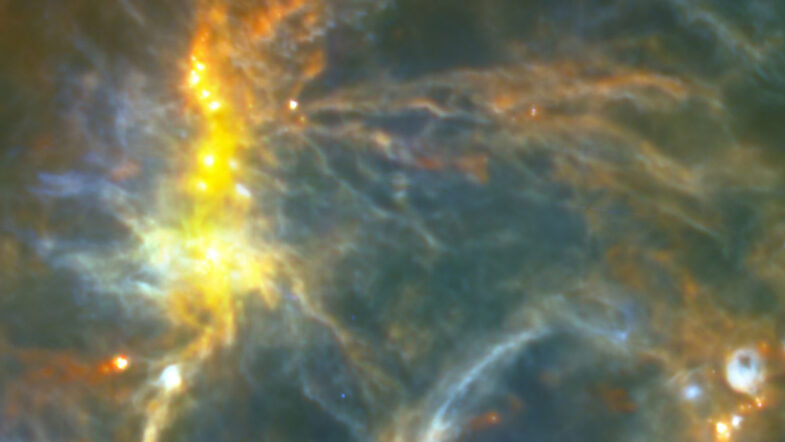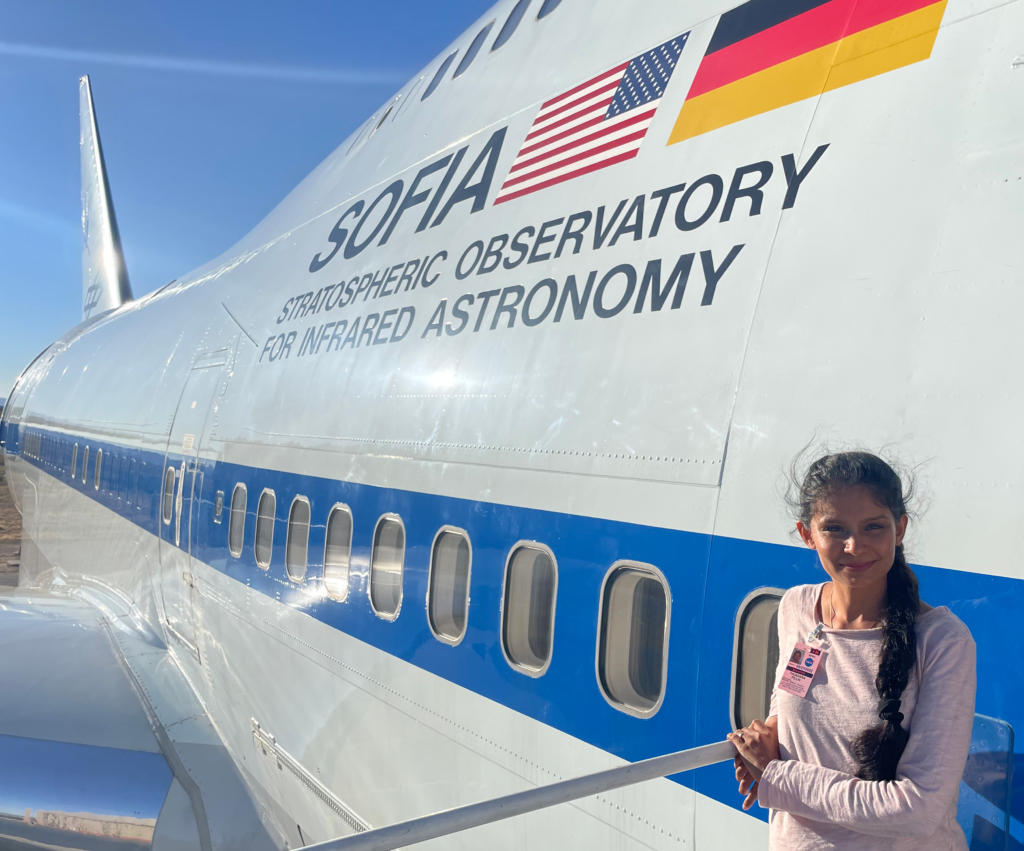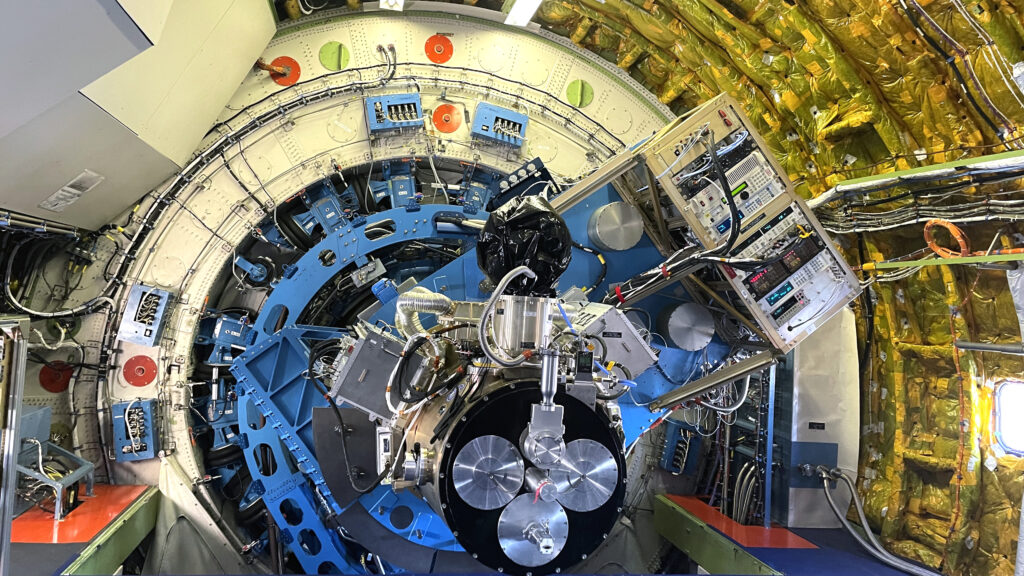
SOFIA’s final photon: SIMPLIFI and star formation
Haystack research scientist Thushara Pillai is leading a project called SIMPLIFI to study the details of star formation. The area between stars is not as empty as it might first seem: the space is filled with gas (mostly hydrogen) and dust, which make up the interstellar medium (ISM). Though the exact process is still being studied, scientists have determined that stars are formed in higher-density regions of the ISM, called dense molecular clouds. SIMPLIFI (Study of Interstellar Magnetic Polarization: a Legacy Investigation of Filaments) is focused on dense molecular filaments, which play a key role in star formation.
Pillai recently flew onboard SOFIA (Strategic Observatory for Infrared Astronomy) — an airborne observatory that is a joint project between NASA and the German Aerospace Center (DLR) — on one of its final flights (see figure 1). The SOFIA mission was recently terminated, and the final photon of the science mission was obtained during a SIMPLIFI observation of the L1157 molecular cloud on the morning of Thursday, 2022 Sep. 29 (PDT). The SIMPLIFI project will now combine these SOFIA observations with other data to constrain the physics of star formation.

Under study are dense molecular filaments, or concentrations of gas and dust within the molecular clouds, which are substantially magnetized. Much of this magnetization must be lost before stars can be formed in the filaments. Observing the magnetic field direction and resulting polarization allows Pillai and colleagues to chart the magnetic field in the dense filaments. SIMPLIFI is generating a comprehensive and unique dataset to map out the connections between the magnetic field structure and dense molecular gas that forms young stars. This work will reveal the relative role of magnetic fields, turbulence, and gravity across multiple spatial scales relevant for star formation. In the end such research reveals the key processes controlling the formation of stars and their planets in the universe. The SIMPLIFI observations are obtained at far-infrared wavelengths of about 200 μm, which are inaccessible from the ground due to absorption in the atmosphere. SOFIA flies above most of the atmospheric water vapor, making observations of this radiation possible.

L1157 is a rather isolated dense star-forming filament at a distance of roughly 1000 light years from Earth. Pillai and her colleagues will now focus their efforts in bringing the rich new data into a format suitable for astrophysical interpretation, and then use the data to derive new insights on how magnetic fields affect the formation of stars and their planets.
Early results from a pilot study for SIMPLIFI were published in Nature Astronomy (Pillai et al., 2020). This work suggested that the magnetic field cannot prevent the collapse of some dense pockets of gas under self-gravity, allowing the gas to stream into newly forming stars. “In our past work, we found for the first time regions in dense molecular clouds where the collapsing flow of gas appears to drag the magnetic field lines along, resulting in magnetic fields parallel to the gas streams,” says Pillai. “We now want to use SIMPLIFI observations of a large sample of molecular clouds to see when and where magnetic fields get suppressed by gravitational and turbulent forces and how that shapes the evolution of the young stars.”
“I am very happy that we are now getting our hands on the rich SIMPLIFI data,” adds project collaborator Jens Kauffmann, leader of the Haystack astronomy group. “Many existing data sets in astronomy can only be analyzed to their full extent if we also know about the structure of magnetic fields. SIMPLIFI now provides this important information for many new targets.”
Pillai and Kauffmann are currently using new data from SIMPLIFI to analyze observations of gas motions in molecular clouds they had collected well before SIMPLIFI was conceived. “Observations of magnetic fields with SOFIA now shed new light on phenomena that were known before,” explains Pillai.
About SOFIA
SOFIA was a joint project of NASA and the German Space Agency at DLR. DLR provided the telescope, scheduled aircraft maintenance, and other support for the mission. NASA’s Ames Research Center in California’s Silicon Valley managed the SOFIA program, science, and mission operations in cooperation with the Universities Space Research Association, headquartered in Washington DC, and the German SOFIA Institute at the University of Stuttgart. The aircraft was maintained and operated by NASA’s Armstrong Flight Research Center Building 703, in Palmdale, California. SOFIA achieved full operational capability in 2014, and the mission concluded no later than Sept. 30, 2022. SOFIA continued its regular operations until then, including science flights and a deployment to New Zealand this summer.